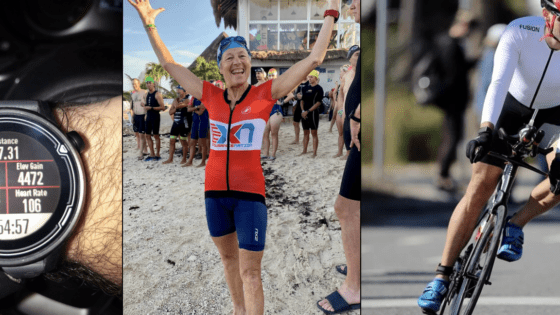Background
In 2007 we published the Four Keys of Ironman Execution — powerful, yet simple to understand and execute, guidance for racing long course triathlon — inspired by our observation of and frustration with so many age group triathletes’ inability to race to their fitness potential. Since then we’ve delivered the live version of the Four Keys at every US Ironman event to audiences of 80-250+ athletes at each race. The Four Keys DVD has since been viewed by over 15,000 athletes.
But even teaching 15,000 triathletes how to race wasn’t enough, because so many show up over-trained, beat-down and burnt out. We realized we need to help triathletes weeks and months before their key race, help them make the right decisions about workouts, training hours and race day expectations.
But before we discuss the Four Keys of Triathlon Training, it’s important for you to understand the perspective from which we approach our job of coaching our Team:
The Four Keys are entirely a function of the need to both maximize and reserve your training time investment for as long as possible to meet real world constraints.
Everything we do — the workouts, the structure, everything — flows backwards from the fact that you are an age group athlete living in the real world. Period. We feel very strongly that any discussion of how to train that does not begin, in the first sentence, with defining how much time you have to train, is largely invalid.
LIFE — not a spreadsheet, not a coach, not a book — dictates your training volume. This is an absolute, do not pass go thing you need to get through your head.
The Endurance Nation Four Keys of Triathlon Training
- #WorkWorks
- Return on Investment
- The Box
- Semper Fun
Key #1: #WorkWORKS
The measure of your current fitness is the ability to do work: to move the mass of your body through space, via wheels, water, or shoes, at pace/speed/watts X for distance/time Y. “Fitness”, as you know it, is simply your body’s ability to perform work at a specific work rate for a period of time.
Don’t worry about what is/is not going on inside your body, or how fit you are. Instead, focus on the output of that fitness, which is your body’s ability to perform the work of pedaling a bike at 20mph for two hours or to tick away 9:00 miles on the run for an hour.
However, your body is very efficient and will only adapt itself to the stresses that you place upon it. Any training session, therefore, is nothing more than an opportunity to force your body do more work than it’s accustomed to performing. The cumulative effect of this increased stress applied over a week, a month, a training period, is that your body is forced to adapt to this ever increasing stress. The expression of this increased adaptation is the ability to do more work = you can go faster and/or longer, ie, you have become more fit.
The key then is not to focus on the time spent or in what heart rate zone you punched the clock. Rather, focus on the training stress imparted to your body during the session and across your training week, as a function of frequency, volume, and intensity.
More importantly, and to bring our second key of Return on Investment (ROI) into the conversation, focus on the work performed in the time that life gives you.
In summary,
- Fitness is the ability to perform more work.
- My body is currently adapted to perform work at a specific work rate.
- I introduce my body to increasing levels of stress and it adapts.
- The expression of this adaptation is the ability to perform work at a higher work rate, ie, I go faster for longer
Once you adopt this perspective you’ll quickly learn that
Work is SPEED Entering the Body
This lesson is so simple and powerful that we’ve boldly printed it on every item of Endurance Nation training and racing kit, as a constant reminder to our athletes (and their training parters), and have distilled it into the Twitterverse as #workWORKS.
Thanks for reading and we’ll be back shortly with Key #2: Return on Investment





Leave a Reply